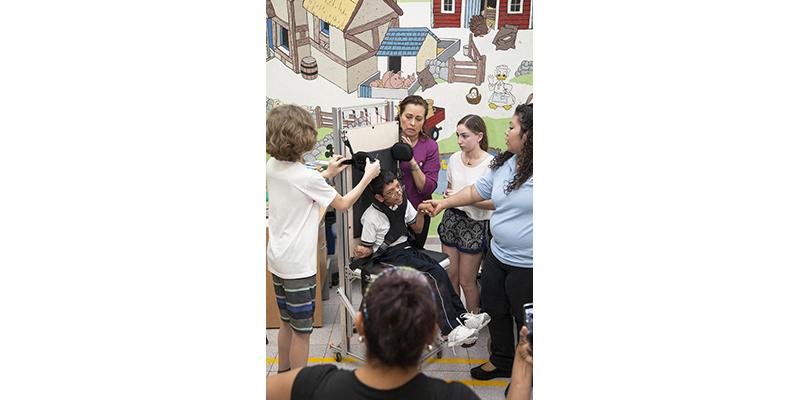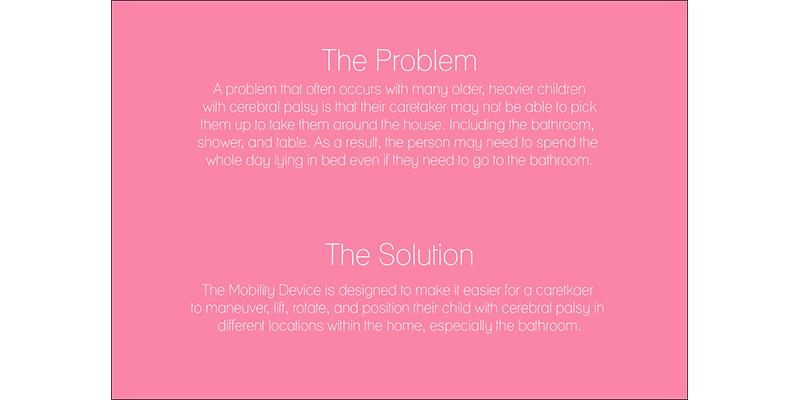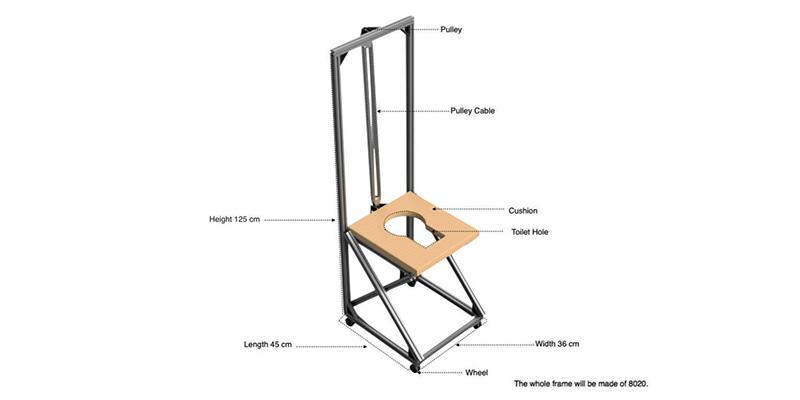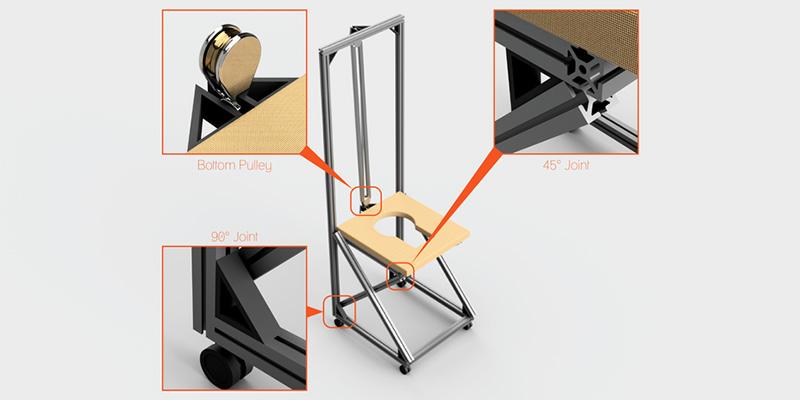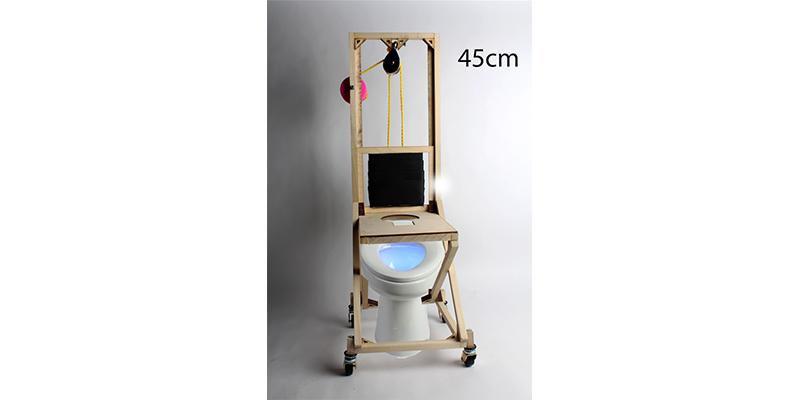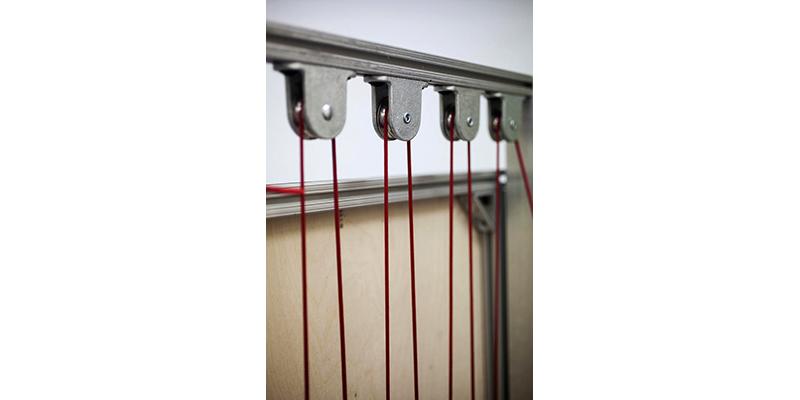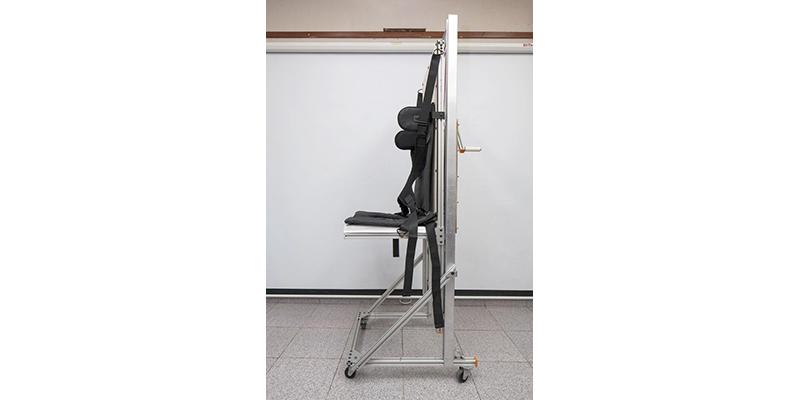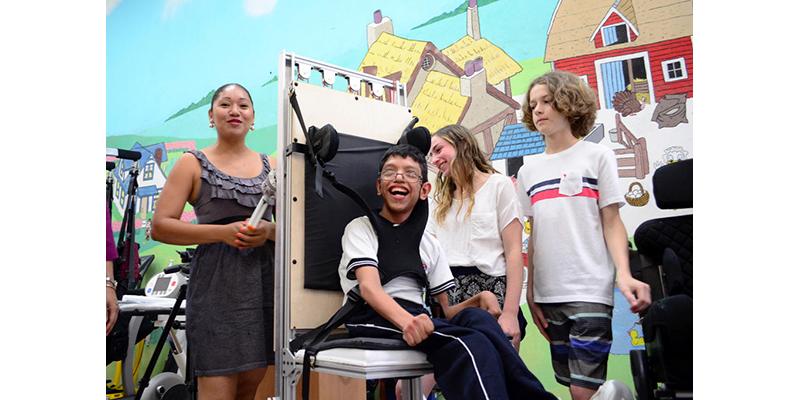Mobility Device
School: NuVu: The Innovation School
City/State: Cambridge, MA
Grade(s): 7, 8, 9, 10, 11, 12
Format(s): Device
Subject(s): Health and Wellness, Mathematics, Science and Technology
Project Overview
NuVu students Noah Grunebaum, Stefano Pagani, Amit Nir and Mohammad Sayed participated in a studio called “Easing Cerebral Palsy.” In this studio students were challenged to design a device that would increase mobility for children with Cerebral Palsy, particularly for low-income users in under-resourced areas. As children grow older their weight often increases to the point that their caretakers struggle with daily tasks such as using the bathroom, taking a shower, sitting at the table and getting into bed. For many children and their caretakers, especially in under-resourced areas, this leads to a diminished quality of life.
To address this need, students envisioned, prototyped and created an affordable, practical and adaptable device that eases these tasks for both the child and their caretaker.
Students began by looking at existing products; researching user needs and analyzing how existing products meet those needs. Through this process they determined that a seated mobility device would best address user needs. Next, they brainstormed ways of altering the height of the seat and chose to use two pulleys “for a 1:2 ratio in the lifters favor” as well as a crank, powered by a socket wrench.
As they iterated their design students made adjustments such as using waterproof materials, changing the wheel positioning, moving the location of the toilet seat, and adding features such as foot rests. Throughout this process, students kept affordability and access in mind, choosing component parts that are easy to find and replace at a local hardware store.
This became especially important because NuVu connected them with a real audience: families and children with Cerebral Palsy in Monterrey, Mexico.
At NuVu, an innovation school in Cambridge, MA, middle and high school students learn in an open and flexible space that is more akin to an architecture studio than a classroom. Some students attend NuVu for a two-week intensive and for others it is their full time high school.
Instead of one-hour classes and separate subjects, students engage in solving a problem through multi-disciplinary learning, all day, for two weeks. Groups of twelve students collaborate on the creative process, with expert guidance from two coaches who have expertise in a related field. Throughout the process students conduct precedent research, engage in brainstorming, render drafts of their ideas, create prototypes and write and reflect on their findings and processes. Their work is captured in a portfolio along with documentation of the final products they debut at the end of each studio session. These portfolios are publically viewable on NuVu’s website.
How This Project Can Be Useful
- Highlights a compelling way to engage students in authentic work that makes the world a better place
- Beautiful example of students planning a solution pathway to solve a real-life challenges and building perseverance in the face of setbacks
- Excellent example of how a real life problem challenges students academically and creatively
- Excellent example of students using mistakes as an opportunity for innovation
- Models a product which could be easily reproduced due to its practical usefulness, professional quality, and low cost
- High-quality example of students drafting, assessing, revising, and collaborating with peers to create an important product
- Successful use of outside experts to guide students work
- Compelling fieldwork to engage and motivate students
